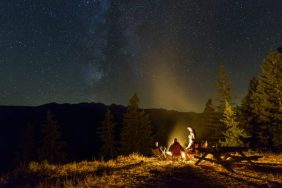Photo: Nickolas Muray, Frida with Olmeca Figurine, Coyoacán, 1939. © Nickolas Muray Photo Archives
Ten kilometers south of Mexico City lies Casa Azul (Blue House), which had been home to Frida Kahlo from 1939 until her dearth in 1954. Now the Museo Frida Kahlo, Casa Azul is home to what remains in life after the passing of the flesh, and the spirit that connects us to each other. The artist’s works were born in this place, a cabinet of curiosities as remarkable as Frida herself.

Frida Kahlo’s Garden, edited by Adriana Zavala, Mia D’Avanza, and Joanna L. Groake (The New York Botanical Gardens/Delmonico Books/Prestel) takes us on a glorious journey inside Casa Azul, exploring the relationship between the artist’s work and milieu. Showcasing more than 20 of Kahlo’s paintings and works on paper, as well as archival photographs, the book accompanies the exhibition Frida Kahlo: Art, Garden, Life at The New York Botanical Garden, now on view through November 1, 2015.

Nickolas Murray, Frida in Front of the Cactus Fence, San Ángel, 1938. © Nickolas Muray Photo Archives
Kahlo’s intense interest in the natural world was evident throughout her work. As Zavala and D’Avanza write in the book’s introduction, “The beauty and diversity of plants, animals, and the Mexican landscape were integral to her work, from enchanting self-portraits and still lifes to provocative depictions of the female experience. Kahlo’s use of botanical imagery reflected the embrace of the archetypal Mexican indigenous and natural elements that defined post-Revolutionary art. But her approach was hers alone.”

Frida Kahlo, Still Life with Parrot and Fruit, 1951 Harry Ransom Center, The University of Texas at Austin © 2015 Banco de México Diego Rivera Frida Kahlo Museums Trust, Mexico, D.F. / Artists Rights Society (ARS), New York
It is Kahlo’s singular vision that has elevated to prominence in our times. In her life and in her work, we witness one woman’s struggle not only to survive, but to use art to speak truth to power. When Kahlo is bold, she is most beautiful, reminding us of the sublime power of Mother Nature to weather ravaging storms and come out shining.

Frida Kahlo, Self Portrait with Thorn Necklace and Hummingbird, 1940 Harry Ransom Center, The University of Texas at Austin © 2015 Banco de México Diego Rivera Frida Kahlo Museums Trust, Mexico, D.F. / Artists Rights Society (ARS), New York
Deeply rooted in the history and traditions of Mexico, Frida Kahlo’s Garden is a tribute to native home. As Robert Bye and Eldemira Linares write for the book, “The garden flora created the illusion of the Mexican countryside and reflected her way of expressing her nationalist identity as well as her fascination with vegetal representations in archaeological pieces and Aztec codices. She may have also been in dialogue with members of her social circle, several of whom became distinguished contributors to Mexican ethnobotany. The botanical diversity and the ecological phenomena expressed in Frida Kahlo’s artwork as well as her garden reflect the interdependence of her physical condition, creativity, and spiritual essence with nature’s cruelty and beauty—an intimate connection that continues to intrigue us today.”
“Frida Kahlo: Art, Garden, Life at The New York Botanical Garden, is on view now through November 1, 2015.
Miss Rosen is a New York-based writer, curator, and brand strategist. There is nothing she adores so much as photography and books. A small part of her wishes she had a proper library, like in the game of Clue. Then she could blaze and write soliloquies to her in and out of print loves. http://missrosen.com






